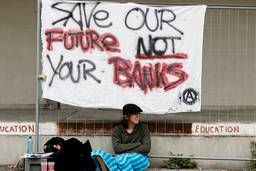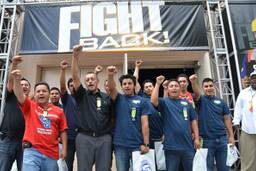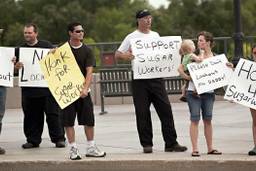The Young and the Healthless? Unemployed ‘Milllennials’ Sicker than Older Workers
Akito Yoshikane
July is typically the summertime peak for youth employment. But new job figures released yesterday by the government show it’s still hard to get hired.
With monthly job openings falling from 3.3 million to 3.2 million in May, finding work has been especially tough for so-called Millennials this year. Older, more experienced workers seeking jobs may have dampened prospects for young adults. Now comes news that the unemployment rate already at 14 percent for those ages 18 to 29, stress may be finally catching up to young Americans’ health.
A Gallup poll released last Friday found that younger unemployed workers suffer more health problems than those over 30 and out of work. The results were part of a larger finding that said in most cases the number of “poor health days” increased the longer a worker was jobless.
Working In These Times has chronicled the connections between unemployment and declining health, along with the challenges facing youth workers in this economy. But the new poll narrows down the specific wellness issues plaguing the young and jobless today, showing that young adult health is adversely affected due to lack of work. Here are the key findings:
- Unemployed 18 to 29 year-olds who have been jobless for at least six months reported the highest amount of sick days, a mean of 6.3 days. That’s nearly three times more than young workers (18−29) who have been without a job for less than six months. Surprisingly, 50-69 year-olds had the lowest health problems with 4.4 days and unemployment had almost no affect on their health.
- Workers who have been unemployed for extended periods suffered more headaches and pain than those who were employed. Those without jobs also felt less rested and weren’t as energetic.
- The young workers suffered the most health issues. The survey notes that some might have had pre-existing conditions but also says “the existence of physical pain, greater sick days, and loss of energy may make it more difficult, at least for the younger unemployed, to maintain employment or find new job opportunities.”
One would assume that workers nearing retirement would suffer the most health problems by virtue of their age. But Gallup says that older adults are more likely to be able to keep their health issues from interfering with their job, adding that they can rely on financial support from their spouse, savings, or severance.
Those soft cushions aren’t as evident for younger workers who haven’t yet had the chance to build their nest egg. Along with the financial woes, the lack of a job hinders their ability to have health insurance via the employer-based system. Consequently, the highest amount of the uninsured are between 19 and 29 with 45 percent reporting that they did not have access to medical care in 2009, according to a Commonwealth Fund survey.
Kaiser Health News lays out the difficulties of getting health insurance:
Since many health plans require adult children to be full-time students in order to stay on their parents’ plans, young adults are at particularly high risk for losing coverage when they leave high school or college.
The Commonwealth Fund survey found that although more than three-quarters of college students had health insurance while they were in school, 28 percent lost their coverage when they graduated or left school. Nearly half of those who were able to get new insurance experienced a gap in coverage; in many cases they were uninsured for a year or more.
The economy has forced many Millennials to continue living or move back in with their parents for financial support, including their health insurance. As part of Obama’s healthcare reform, young people can remain on their parent’s plan until they’re 26, though this won’t be enacted until September, if at all.
There have been signs that Millennials are more optimistic about their future job prospects, but that is tempered by the physical toll unemployment is taking on their health. With the economy recovering at a glacial pace, how much longer can that positive outlook last?







